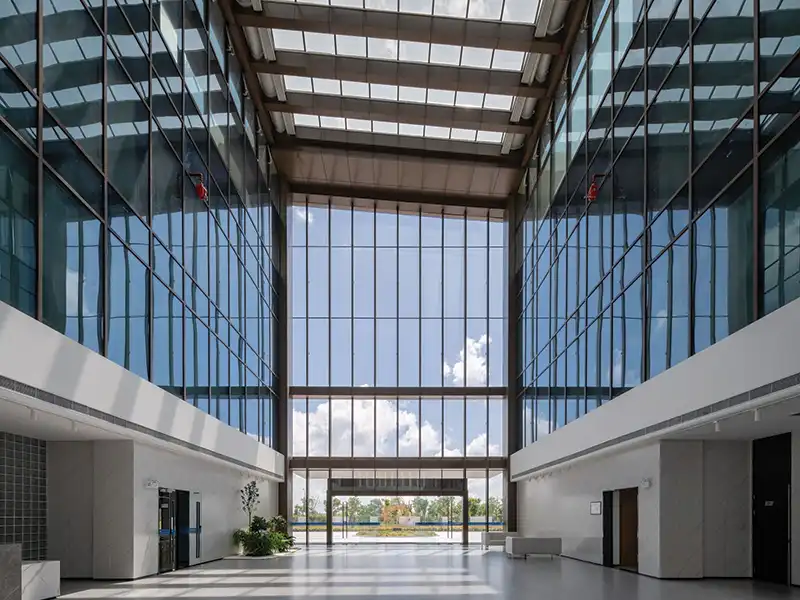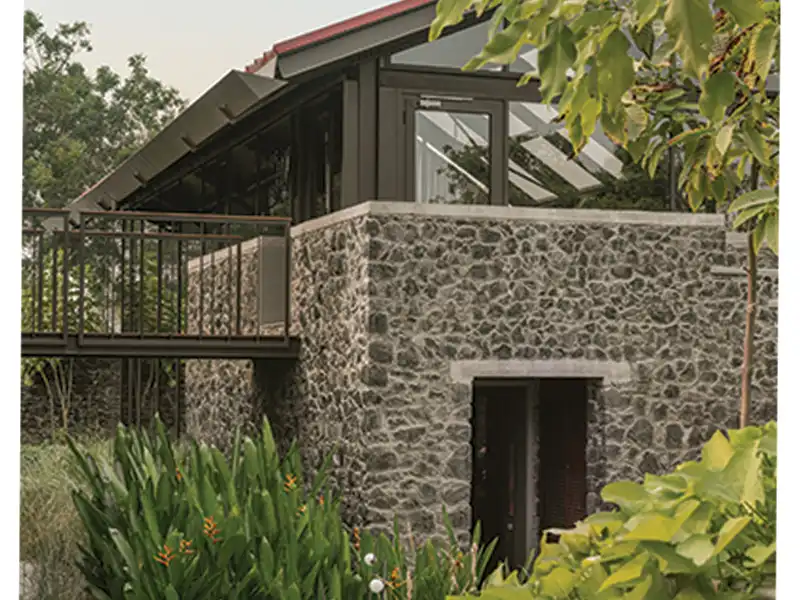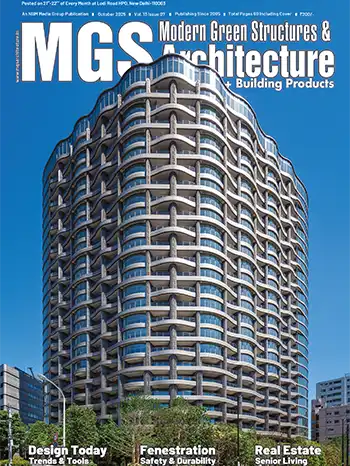
Fact File
Architecture, Masterplanning, Interior Design: Studio SymbiosisSite Area: 132 acres
Station Area: 24,111 sqm
Built-up area overall: 9,16,969 sqm
Client: Indian Railway Stations Development Corporation (IRSDC) Winner of International Design Competition / Design Commission
Status: Tender Stage
Baiyappanahalli train station and masterplan has been designed as a vibrant and contemporary piece of architecture keeping in spirit the city of Bengaluru. Better known as the ‘Garden City of India’, Bengaluru’s essence is its greenery. However, this green cover is fast depleting owing to the fast urbanization of the city.
The station has been envisaged as a green landscape, floating above the train platforms. The landscaped terrace of the station also serves as a breakout space for visitors. This “urban green roof” creates a landmark building with a strong urban presence.
Studio Symbiosis Design: Amit Gupta and Britta Knobel Gupta
A green buffer between the site boundary and the city and between the built zone and the train tracks has been created. These green belts are proposed for pedestrian friendly movement along with bicycle tracks. It was critical to ensure a grafting of the proposed streets to the existing streets of the city. An 18-meter-wide road is proposed as the main artery of movement within the site that does not interfere with the movement of city traffic.

The skyline responds to the station building and dips down to create a visual response and mark the directionality of the station. The station building itself is sitting partially above the tracks along with two elliptical office buildings nested above the station building, exploiting the FSI of the air rights. A bus terminal and shopping mall on the other side, give a balance of movement and activity.
In the plan, the building morphs from a straight line to three defined zones at the entrance, creating segregated arrival and departure entrances, and entrances from the bus terminal and from offices and the shopping area. These spaces are delineated by the definition of a curve that creates these three zones, seamlessly defined yet connected.

A multi-modal transport hub has been generated to ensure ease of connectivity with the network. A bus depot located adjacent to the station building has a segregated approach for the buses. An underground subway connection to the metro has been proposed. Alternatively, an over ground shuttle service is provided to connect the station building with the metro station.

Internal green gardens align with the Garden City Ideology. Green corridors bifurcate pedestrian and bi-cycle movement. The green foliage is nested in the courtyards at the entrance and concourse level as well as on the platform level. Sprinklers and drip irrigation systems prevent excessive watering in the landscape area and treated water from STP is used for irrigation.
The platform level is fully shaded below the concourse level with green walls and hanging planters. Here, skylights allow natural light to fall on the platforms. Solar photovoltaic and solar hot water are proposed on the roof of the neighbouring station maintenance buildings, and separate collection points for organic, paper, plastic, metal etc are planned.

Designing a Sustainable Building
The station building design creates a visual porosity and an abundant light condition, ensuring maximum use of daylight and promoting wind flow on the platform area. The open green courtyards are green gardens with natural ventilation to be enjoyed.Natural ventilation, abundant light, green spaces, active slabs, and renewable energy have been integrated in the design. An optimum ratio of opaque to solid provides sufficient daylight in the station building while preventing excessive heat from entering. The courtyards bring in natural light deep inside the concourse and allow for air movement through the station building.

Energy saving has been ensured by maximizing daylight, use of LED light fittings, passive cooling on non-air-conditioned areas, use of efficient air conditioning, heat recovery, building management system for optimising air conditioning and lighting, and in selected areas, floor tiles that generate electricity based on foot movement will be installed.
















